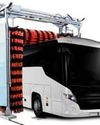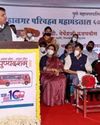
As I sit down to pen this article and reminisce on the year that passed by, I am caught in a whirlpool of emotions to say the least. In the four decades of association that I have had with the automotive industry in various capacities, there never has been a year so cathartic, never so heart-wrenching, and yet so challenging. The road that has been traversed in the past one year, nay two years, has been so undulating with twists and sharp U-turns that it would put any hill climb to shame! Yes, the year 2020 has been the year of BS-IV to BS-VI transition and of course the year of the coronavirus pandemic. Let me pull back and begin at the beginning! For this one must go back to 2016.
Cranking the Engine of Change
The Government of India had commenced the process of defining emission norms for petrol engine in 1991 and diesel engine vehicles in 1992, followed by compulsory fitment of catalytic converters in petrol-driven cars in 1996. The equivalent of the Euro norms was Bharat Stage emission norms. First introduced in 2000, it called for moving from BS-III to BS-IV by April 1, 2017, BS-V by April 1, 2020 and BS-VI by April 1, 2024. The government announced in January 2016 that effective April 1, 2020 BS-VI would be applied across India for both petrol and diesel engines of all classes. This bold decision to crash timelines was taken as there was no change in fuel specifications between BS-V and BS-VI.
Esta historia es de la edición April 2021 de MOTORINDIA.
Comience su prueba gratuita de Magzter GOLD de 7 días para acceder a miles de historias premium seleccionadas y a más de 9,000 revistas y periódicos.
Ya eres suscriptor ? Conectar
Esta historia es de la edición April 2021 de MOTORINDIA.
Comience su prueba gratuita de Magzter GOLD de 7 días para acceder a miles de historias premium seleccionadas y a más de 9,000 revistas y periódicos.
Ya eres suscriptor? Conectar

ATS ELGI launches new range of equipment for CV segment
GARAGE EQUIPMENT

VECV delivers 50 CNG buses to PMPML in Pune
VEHICLE ZONE

Lucas TVS chosen as one of India's best workplaces in auto industry
The certification was done by The Great Place to Work Institute which works with the purpose of giving companies an opportunity to benchmark their practices that make every workplace unique for employees

JAMNA AUTO launches new trailer air suspension, bullish on market success
Understanding the pulse of the Indian customers, drivers and operating conditions, the home-grown company has come up with an ‘Indian product for Indian roads at Indian price’, reports N. Balasubramanian

Bridgestone drives Saabri Logistics' advancement with top-notch end-to-end tyre management
It is never easy for a fleet operator to strike the right balance between tight revenues and rising fuel and parts’ costs. However, if chosen wisely, important elements such as tyres can help in business advancement. Rajesh Rajgor finds this to be true in the case of Saabri Logistics

ZF to invest Euro 200 million as part of ‘Refresh India' strategy
ZF has announced a significant investment of around Euro 200 million as part of a strategic consolidation of its business domains with renewed impetus to drive growth in the Indian market over the next decade.

Chasing records, making roads, with Tata trucks
Jagdish Kadam, Chairman & Managing Director, Raj Path InfraCon shares details with MOTORINDIA about striving to create a world record for the longest road constructed in 24 hours, his company operations, and his fruitful association with Tata Motors.

IPL-Shaw JV for DEF solutions takes flight!
Commenting on this development, Gautam Venkataramani, Director, IPL Shaw Solutions India, said, “India Pistons Limited’s customer experience, local manufacturing strength over 60+ years with research and development and application engineering expertise will be used to provide DEF system solutions with light-weighting, performance-oriented approach leading to CAFE focus.”

What COVID has taught the resilient auto retail industry
In this special Guest Column, Vinkesh Gulati, President, Federation of Automobile Dealers Associations (FADA), shares his observations and views on how the Indian automotive retail sector has weathered the COVID storm and the key learnings and takeaways from the experience

“Cautiously optimistic on growth as COVID continues, emphasis on strong exports and aftermarket” - Vinnie Mehta
Contributing more than 6% to the nation’s GDP as per reports in April 2021, the Indian automotive industry in its entirety provides employment to about ‘37 million people’.